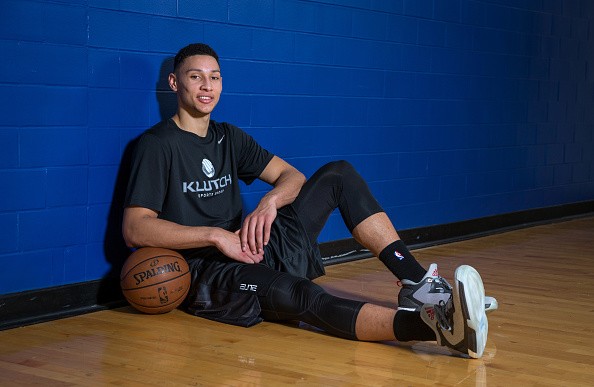The 2016 NBA Draft has concluded and the Philadelphia 76ers have chosen Ben Simmons as the no.1 overall pick.
In choosing Simmons over the Brandon Ingram, the Sixers followed the time-tested advice to pick the Best Player Available, especially if you have the first overall pick. This is the Sixers' blessing but also its burden-they get to make the choice, but they can also get criticized for it. Unlike the Lakers, who will take whoever among Simmons and Brandon Ingram the Sixers leave on the board.
This debate has been dissected, and ESPN used their analytics to arrive at a startling conclusion: Ingram is "a safer option who would fill a great need for the 76ers."
The ESPN feature from Sharon Katz mentioned three reasons why the Sixers should have chosen Ingram. The first is that Ingram is younger than Simmons and seemed to be on a higher curve of improvement than Simmons was.
While both are freshmen, Ingram is 18 years and nine months while Simmons turns 20 in July. Not a big deal? Katz used Buddy Hield as an example.
"Age is a major factor when projecting prospects. If Buddy Hield had been evaluated as a freshman, he probably would not have been drafted, as he would have been seen as an erratic guard who could not or defend," Katz presented. "Hield blossomed into an elite shooter, and scouts expect similar (though not such drastic) improvement from young players as they enter the NBA."
In the same way, Ingram looked "weak and lost" when he started his freshman season but in just four months, Ingram won ACC Freshman of the Year honors and also scored in his 20s during the tournament. On the other hand, Simmons posted impressive numbers from Day One, but has shown little to no improvement since.
Another factor is versatility. While this is one of the traits that made Simmons no.1, he does fail at a very important component of the game nowadays-shooting.
That is something Ingram can do (41% on threes), and along with his offensive potential, he can also excel on defense with his speed and long wingspan. What sets him apart is that he can contribute to the offense without holding the ball, and that gives him an edge over Simmons.
Finally, while Simmons has the higher upside (ceiling), Ingram has the higher floor (worst case scenario). Hence, Ingram is the safer pick.
Even from the Sixers home, CSN Philly writer Andrew Unterberger has mentioned that Simmons "could be the best player but may actually be the wrong pick."
To defend this, he had to contend with the "Best Player Available" argument in very detailed fashion. He concludes: "I think it's acceptable, and downright prudent, to reach for the second-best talent, if that player is going to put the rest of your team in a better position to succeed not only now, but in the future."
Choosing Simmons means more work for the front office and with their recent failure to trade Okafor for a top 5 pick, they will have a busy offseason. But the Sixers brass, headed by GM Byran Colangelo probably knew that,



























